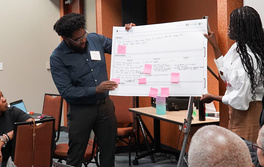
World Economic Forum Releases Guidelines for City Mobility: Steering Towards Collaboration
The World Economic Forum’s Global Future Council on Mobility has released eight practical guidelines — from data-sharing to multimodal integration — that help establish, develop and strengthen partnerships between cities and mobility partners.
The Guidelines for City Mobility: Steering Towards Collaboration provide a guide for cities and companies to improve their freight and passenger mobility practices by managing the sharing of trip data, minimizing public space usage, responding to the needs of communities, ensuring adequate working conditions and increasing shared mobility and pooling. The guidelines preliminarily define the points that anchor the relationship between both parties to ensure that the Shared Mobility Principles for Livable Cities and Principles of Mobility Justice are upheld, the goals of cities and mobility partners are accomplished in a mutually supportive way and the basic mobility needs of users are prioritized above all.
How people and goods get around our cities is undergoing considerable change. As new mobility options are introduced, cities and communities are trying to lower emissions, improve safety and increase affordability and accessibility of transport networks. Cities, mobility partners and communities are taking a systems perspective to rethink the movement of people and goods.
“We are at a historical point in the process of urban and transport development globally," explained Harriet Tregoning, director of NUMO, the New Urban Mobility alliance, which contributed to the guidelines. "The introduction of new forms of mobility does not come without challenges, and sharing experiences across the board can be a powerful way of building knowledge, improving systems and ensuring ownership and sustainability. These guidelines capture a collaborative approach for cities and mobility partners to ensure the ultimate beneficiary is the user regardless of where in the world they are and that technology is a tool for better mobility, rather than the end goal.”
The guidelines reflect shared goals for livable and just transport networks and cities. They are intended to serve as a blueprint for collaborations, including existing, new and future partnerships. Each guideline is intended to complement the operating authority of cities with the creativity and innovation of the private sector.
Read more about the Global Future Council on Mobility here.
Header image: New York City Department of Transportation/Flickr




